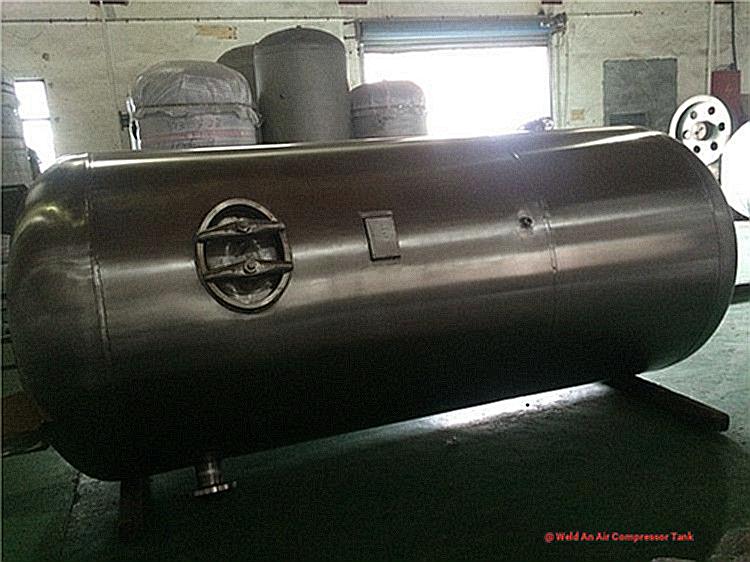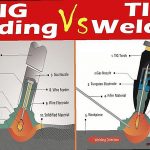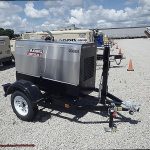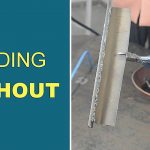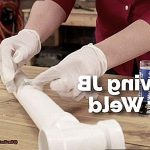Today, we’re delving into the process of welding an air compressor tank – a vital element in various industries, from construction to manufacturing. Welding an air compressor tank may seem like a daunting challenge, but with proper techniques and equipment, it can be accomplished with accuracy and speed.
So, grab your safety gear and join us as we embark on this welding journey.
Can You Really Weld an Air Compressor Tank?
Contents
- 1 Can You Really Weld an Air Compressor Tank?
- 2 How Do Air Compressor Tanks Get Damaged?
- 3 What Are The Different Techniques of Welding an Air Compressor Tank?
- 4 What Are The Types of Metal Finishes in Air Compressor Tanks?
- 5 How Safe is Welding an Air Compressor Tank?
- 6 What to Consider Before Starting to Weld an Air Compressor Tank?
- 7 How to Weld an Air Compressor Tank?
- 8 Related Matters
- 9 Conclusion
After all, it’s not as simple as just picking up your welding gear and getting to work.
The complexity of welding an air compressor tank lies in the careful consideration of various factors, including the type, size, and thickness of the tank. It’s also crucial to choose the right material – one that is compatible with the compressor’s contents and application.
But before we dive into the welding process, let’s first understand why it’s essential to have a well-maintained air compressor tank.
Why Burstiness Matters in Welding Your Air Compressor Tank
An air compressor tank serves a vital purpose – to store compressed air for powering various tools and machinery. However, with constant use and exposure to elements like moisture and chemicals, the tank can become susceptible to damage.
That’s where burstiness comes into play. By welding your air compressor tank, you can prevent leaks, extend its lifespan, and ensure efficient operation. It’s a cost-effective solution that saves you from having to purchase a new tank.
Choosing the Right Material: A Crucial Step
When it comes to welding an air compressor tank, selecting the right material is crucial. While steel is a common choice for its weldability, it’s vital to check its compatibility with your compressor’s content before proceeding.
TIG or MIG Welding: The Recommended Methods
For strong and durable welds on your air compressor tank, TIG (Gas Tungsten Arc Welding) or MIG (Gas Metal Arc Welding) are the recommended methods.
TIG welding utilizes a non-consumable tungsten electrode and shielding gas to create precise welds with minimal distortion. On the other hand, MIG welding is preferred for clean and robust welds on projects that require it.
How Do Air Compressor Tanks Get Damaged?
As a master of welding, you understand the significance of safeguarding and upkeeping your equipment. For air compressor tanks, prevention is the key to avoid any potential damage. These tanks are susceptible to wear and tear over time, which can result in leaks or other complications that impact their capacity and safety. In this article, we will delve into the potential hazards and necessary maintenance for these critical pieces of machinery.
Welding as a Quick-Fix Solution
When you spot superficial damage on your air compressor tank, your first instinct might be to weld it. While welding may seem like a quick solution, it may not address any internal corrosion or major issues. Moreover, welding on an air compressor tank carries certain risks such as fire hazards, injuries, or subpar welds. Therefore, it is crucial to assess the extent of the damage before deciding on a repair method.
Regular Inspection and Maintenance
To prevent damage and ensure efficient functioning of your air compressor tank, regular inspection and maintenance are essential. This includes draining the tank after usage, examining fittings for any signs of wear or damage, changing oil (if applicable), and inspecting hoses for wear and tear. Consistent maintenance tasks can significantly extend the lifespan of your tank and save you from expensive repairs or replacements.
Replacing an Air Compressor Tank
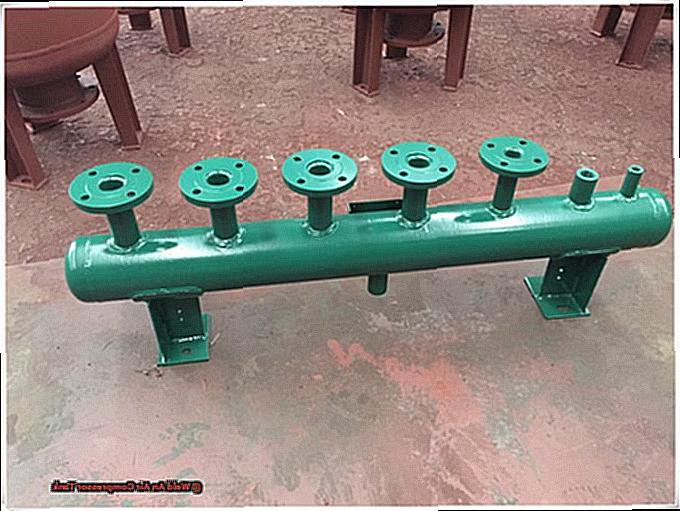
If your air compressor tank is beyond repair, it is important to take necessary safety measures while replacing it. This includes properly disposing of the old tank and selecting the appropriate size and type for your specific needs. While purchasing a used tank may seem economical at first, it can end up costing more in the long run due to its lower quality and potential maintenance or repair requirements.
Size Matters
When it comes to air compressor tanks, size plays a crucial role. The size of the tank must match the CFM (cubic feet per minute) requirement of the air tools being used.
What Are The Different Techniques of Welding an Air Compressor Tank?
First and foremost, it’s crucial to note that welding an air compressor tank should only be done by trained professionals. This ensures that safety standards are met and the tank is of the highest quality. Proper maintenance and inspection before welding are also essential to ensure the tank is in good condition and can withstand the welding process.
There are three common welding methods used for air compressor tanks: MIG, TIG, and plasma cutting. The choice of method depends on various factors such as the tank’s design, cost, and desired results. It’s important to consider the type of material, joint, budget, equipment availability, location of weld, and desired aesthetics when determining the best welding method.
Gas tungsten arc welding (GTAW), also known as TIG welding, is most suitable for thin metals like aluminum. This method produces precise and clean welds with minimal heat input, making it ideal for delicate materials. On the other hand, plasma arc welding (PAW) is better suited for thicker metals like plate steel. This method uses a highly concentrated arc to melt the metal, resulting in deeper penetration and faster welding.
Before beginning the welding process, it’s crucial to have a clean surface on the tank. Any dirt or contaminants can lead to defects in the weld and compromise the strength of the seal. Routine cleaning of gas or oil from the tank is also beneficial as it helps prevent rust and corrosion – two common enemies of air compressor tanks.
Leaks in an air compressor tank can be caused by cracks or holes due to corrosion or faulty fittings/valves.
What Are The Types of Metal Finishes in Air Compressor Tanks?
The type of finish used depends largely on the material of the tank itself, as each finish offers unique properties and advantages. It is essential to choose the most suitable finish to ensure the longevity and performance of the tank.
The most commonly used materials for air compressor tanks are steel, aluminum, and stainless steel. For steel tanks, powder coating is the preferred finish. This involves applying a dry powder and curing it with heat, resulting in a robust and resilient finish that can withstand corrosion and scratches. On the other hand, aluminum tanks require anodizing or chromate conversion coating for better heat dissipation and protection against corrosion.
Stainless steel tanks are known for their resistance to corrosion, but they still need a metal finish for added protection. Passivation is a common choice for stainless steel tanks, which involves treating the surface with an acidic solution to eliminate impurities and create a protective layer against rusting. Depending on specific needs or requirements, other specialized finishes such as galvanizing or electroplating can also be utilized.
Before applying any finish, proper surface preparation is crucial. This includes thoroughly cleaning and degreasing the surface to ensure optimal adhesion of the finish. When selecting a metal finish for an air compressor tank, one must consider factors like the environment it will be used in and any specific needs or requirements.
In addition to choosing the right finish, regular maintenance and proper care of the finish are essential in extending the lifespan of the air compressor tank. By following these guidelines and taking necessary safety precautions while welding, one can guarantee a strong and durable air compressor tank that will serve them well for years to come. After all, even the most skilled welder knows that attention to detail extends beyond just welding techniques.
How Safe is Welding an Air Compressor Tank?
The safety of welding an air compressor tank depends on various factors, including the thickness of the tank wall, its condition, and the chosen welding technique. Let’s delve deeper into each of these elements to gain a better understanding of how to ensure a secure weld.
Tank Wall Thickness:
Before attempting to weld an air compressor tank, it is vital to evaluate its wall thickness. The American Society of Mechanical Engineers (ASME) has established minimum thickness standards for air compressor tanks, which must be followed precisely to guarantee a weld that can withstand high pressures.
Tank Condition:
The condition of the tank is another crucial aspect to consider before welding. Severely damaged or corroded tanks should not be welded as they pose a significant risk of explosion. Hence, it is imperative to thoroughly inspect the tank and assess any signs of wear and tear before proceeding with welding.
Choosing the Right Welding Technique:
Different welding techniques, such as MIG, TIG, or Stick welding, can be used for air compressor tanks. The selection of the appropriate technique depends on various factors, including the type of metal used for the tank and the location of the weld. It is crucial to choose the right technique to achieve a sturdy and long-lasting weld.
Safety Precautions:
Welding an air compressor tank also entails taking necessary safety precautions. Some recommended measures include wearing protective gear, ensuring proper ventilation in the workspace, and having a fire extinguisher nearby in case of emergencies.
In conclusion, while welding an air compressor tank can be safe if you consider its wall thickness, assess its condition, and choose the appropriate welding technique, it requires expertise and careful consideration to achieve a reliable result.
What to Consider Before Starting to Weld an Air Compressor Tank?
Trust me, taking the time to assess these factors can make all the difference in the outcome and safety of your welding endeavor. Let’s delve into what you should keep in mind before diving into the welding process.
First and foremost, it is crucial to determine the type of metal used in the tank. While most air compressor tanks are made from weldable steel, it is essential to double-check before beginning the welding process. Some tanks may be made from non-weldable materials, so make sure to do your research beforehand.
Another critical consideration is the condition of the tank itself. Before attempting to weld, carefully inspect the tank for any dents or damages. If you come across any, it is best to have them repaired by a professional welder before proceeding with your own welding work. Welding a damaged tank can be dangerous and may result in leaks or even explosions.
Safety should always be a top priority when it comes to welding, but it is especially crucial when working with an air compressor tank. Be aware of any potential hazards in the surrounding area, such as flammable materials. It is also imperative to wear appropriate safety gear, including a welding helmet and protective clothing, to shield yourself from sparks and fumes.
Using the correct welding technique is also vital for a successful and safe weld on an air compressor tank. The size and thickness of the tank will determine which technique is best suited for the job. For smaller tanks, consider using keyhole welding as it produces minimal distortion and heat-affected zones. On the other hand, MIG and plasma welding are popular choices for clean and strong welds on larger projects.
Just like with any welding project, it is crucial to follow all safety measures carefully.
How to Weld an Air Compressor Tank?
Follow these simple steps and you’ll have your tank back up and running in no time.
Step 1: Fully Charge the Air Compressor
Before attempting any repairs, make sure your air compressor tank is fully charged. This will help you locate the leak more efficiently.
Step 2: Inspect the Tank with Soapy Water
Next, release all the air from the tank and inspect it with soapy water. The solution will create bubbles at the site of the leak, making it easier to identify.
Step 3: Release All Air from the Tank
Once you’ve located the leak, release any remaining air from the tank. This step is essential for safety and to prevent potential explosions.
Step 4: Flatten the Leaking Area
Before welding, ensure that the leaking area is properly flattened. Use a hammer or pliers to smooth out any dents or bumps around the hole.
Step 5: Use a Soldering Torch
For tanks with thinner walls, a soldering torch can be used to weld the hole. This method is suitable for amateur welders and can be done with proper precautions.
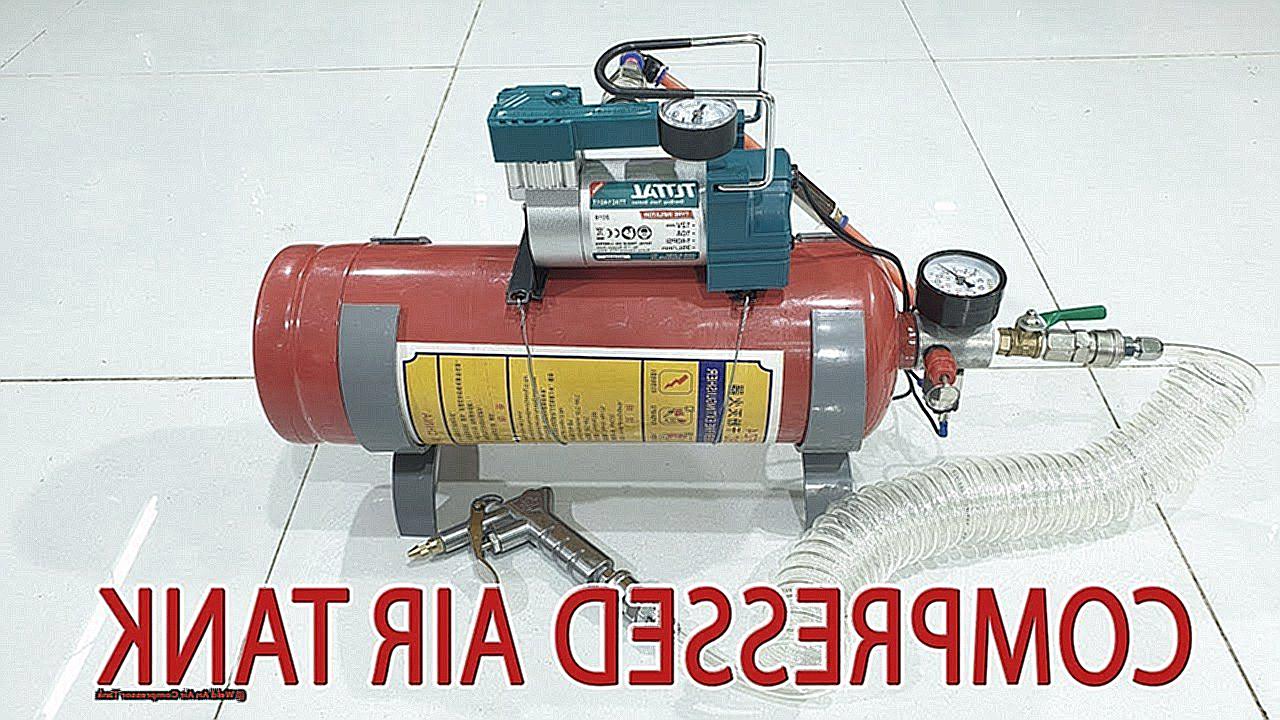
Step 6: Seek Professional Assistance for Thicker Tanks
For thicker-walled tanks, it’s best to seek professional help and use an automated K-TIG welding process. This method is only available through welding experts and guarantees a secure repair.
Remember, safety is crucial when welding an air compressor tank. Always drain the tank of any air and moisture and wear appropriate safety gear such as a helmet, gloves, and protective clothing.
In conclusion, repairing a hole in your air compressor tank may seem overwhelming, but with the right tools and techniques, it can be easily fixed.
Related Matters
Welding an air compressor tank may seem like a straightforward task, but it requires extensive knowledge and caution to ensure both safety and effectiveness. As an expert in this field, I have gathered crucial safety measures for welding your air compressor tank.
Seek Guidance from a Professional
Before attempting to weld your air compressor tank, it is essential to consult with a professional welder or experienced enthusiast. They can offer valuable advice on the type, size, and thickness of your tank and recommend the appropriate welding process.
Consider the Type and Size of the Tank
Different tanks require different welding techniques. For example, thinner tanks can be welded using MIG (metal inert gas) welding, while thicker tanks may require TIG (tungsten inert gas) welding. Take into account the material and size of your tank before starting the welding process.
Empty and Clean the Tank Thoroughly
Ensure that your air compressor tank is entirely empty and free from any flammable materials before commencing the welding process. Flammables can result in explosions, causing severe injuries or damages.
Prioritize Safety Precautions
When welding an air compressor tank, it is vital to work in a well-ventilated area. Keep fire extinguishers nearby in case of emergencies and cover any nearby flammable materials to prevent fires caused by sparks and heat produced during welding.
Moreover, make sure to wear appropriate personal protective equipment such as gloves, face shields, welding helmets, and safety glasses to safeguard yourself from potential hazards.
Hire a Skilled Welder
Welding an air compressor tank demands proper techniques and expertise. It is advisable to hire a skilled and qualified welder with experience in welding tanks. They will ensure that the welding process is carried out correctly and safely.
Conclusion
In conclusion, welding an air compressor tank may appear to be a daunting task, but with the right techniques and equipment, it can be accomplished with precision and efficiency. As we have explored in this blog post, there are several crucial factors to consider before starting on this welding journey. From selecting the appropriate material and method to ensuring proper maintenance and safety precautions, each step plays a vital role in achieving a strong and long-lasting weld.
Understanding the significance of burstiness in maintaining an air compressor tank, choosing the right material and finish, and following necessary safety measures are all essential for efficient operation and preventing costly repairs or replacements. And for those faced with a hole in their tank, our step-by-step guide offers simple yet effective tips for a successful weld.
Always remember, when it comes to welding an air compressor tank, safety should always be the top priority. Seeking guidance from professionals and hiring skilled welders are crucial steps in ensuring a secure repair.
